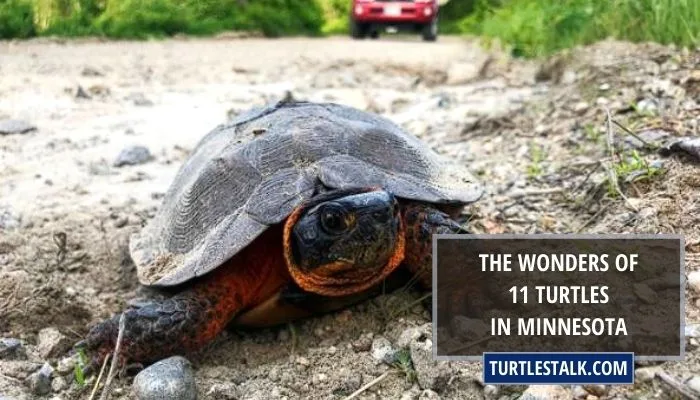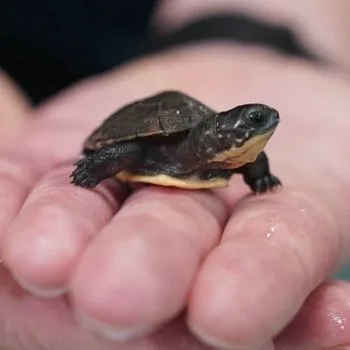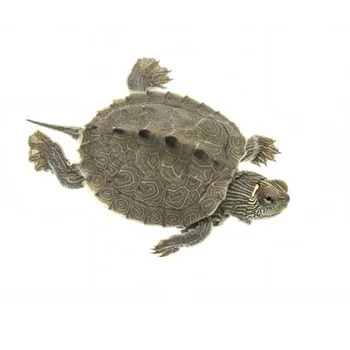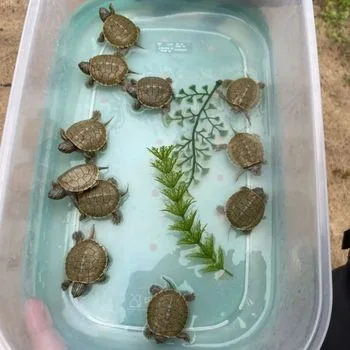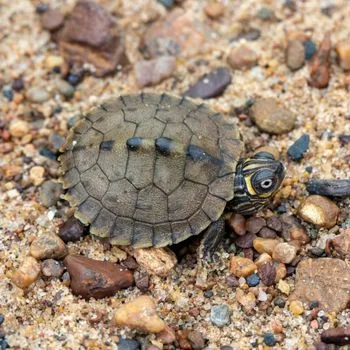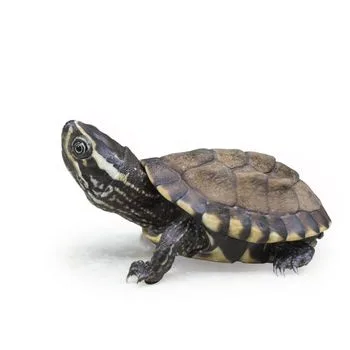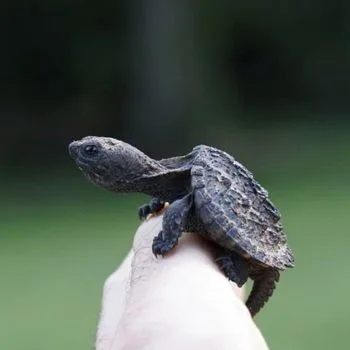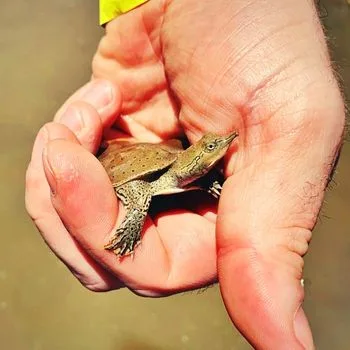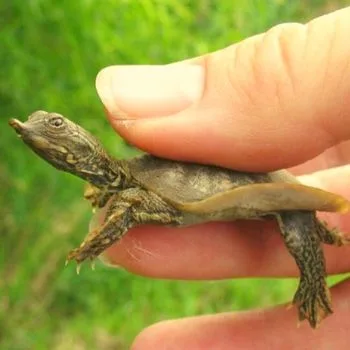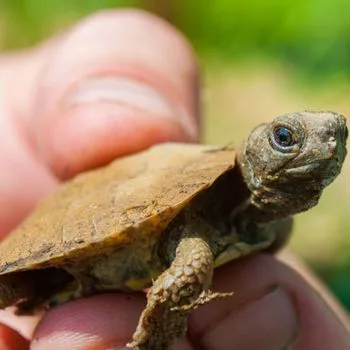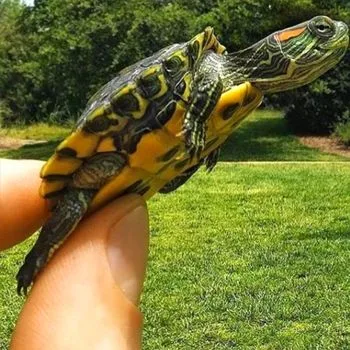The Wonders of 11 Turtles in Minnesota
Minnesota is home to a wide variety of turtles, with at least eleven different species native to the state. From the common Painted Turtle and Snapping Turtles, to more exotic specimens like False Map Turtles and Ouachita Map Turtles, Minnesota offers an exciting range of turtle varieties for you to discover!
But why explore these fascinating creatures?
Read on to find out about some of the interesting facts that make each type of turtle so special – it’s sure to be an eye-opening experience!
| # | Name | Details | Image |
| 1 | Blanding Turtle (Emydoidea Blandingii) |
| 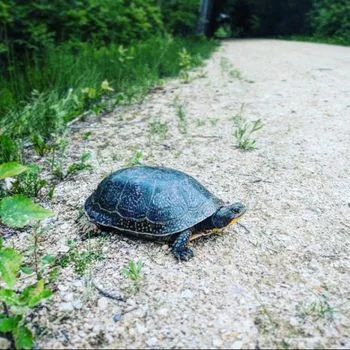 |
| 2 | False Map Turtle (Graptemys Pseudogeographica) |
| 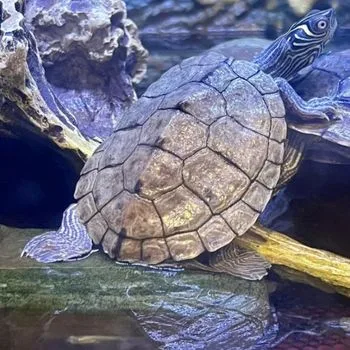 |
| 3 | Northern Map Turtle (Graptemys Geographica) |
| 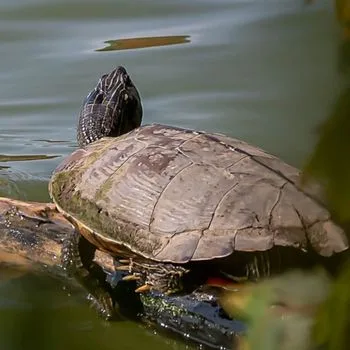 |
| 4 | Ouachita Map Turtle (Graptemys Ouachitensis) |
| 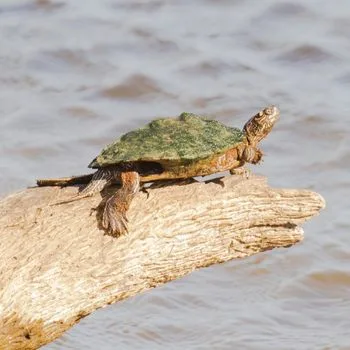 |
| 5 | Eastern Musk Turtle (Sternotherus Odoratus) |
| 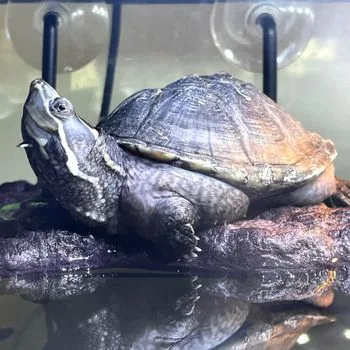 |
| 6 | Western Painted Turtle |
| 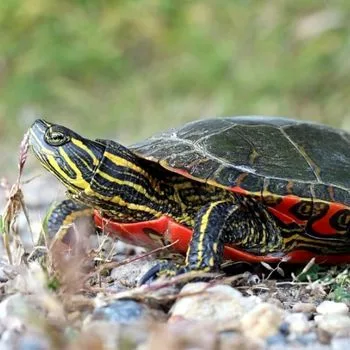 |
| 7 | Common Snapping Turtle (Chelydra serpentina) |
| 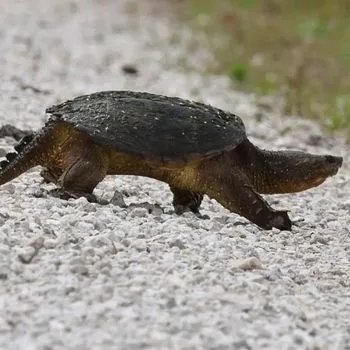 |
| 8 | Smooth Softshell Turtle (Apalone Mutica) |
| 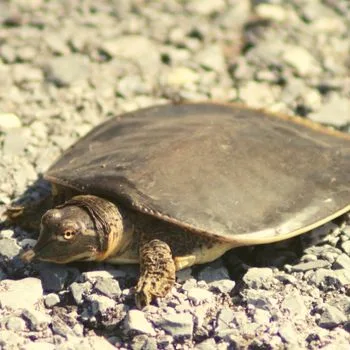 |
| 9 | Spiny Softshell Turtle (Apalone Spinifera) |
| 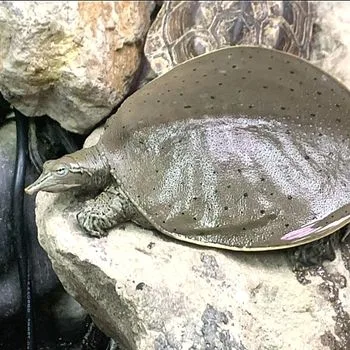 |
| 10 | Wood Turtle (Glyptemys Insculpta) |
| 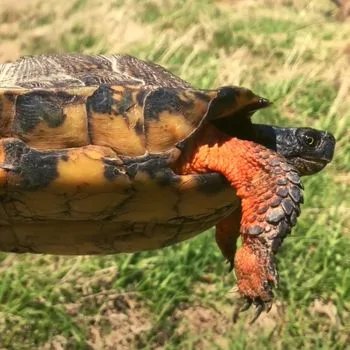 |
| 11 | Red Eared Slider (Trachemys Scripta Elegans) |
| 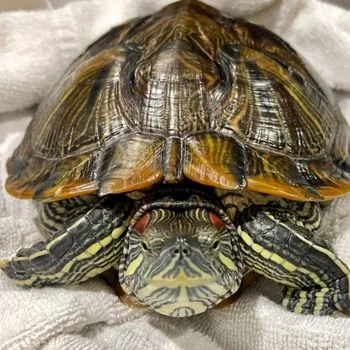 |
11 Turtles You Can Find in Minnesota
In total, there are 11 species of turtles in the state of Minnesota. This guide will take you on an exploration through each turtle type and provide tips for providing them with proper care. So, let’s get started on our journey into discovering all the wonders that these reptiles have to offer!
1. Blanding Turtle (Emydoidea Blandingii)
- Family: Emydidae
- Genus: Emydoidea
- Type: Freshwater turtle
- Natural Habitat: Marshes, swamps, ponds, and slow-moving streams in eastern north america
- Lifespan: 20-30 years
- Maximum Size: 8-10 inches in carapace length
- Maximum Weight: 1-2 pounds
- Prone to Diseases: Shell rot, respiratory infections, and skin infections
- Aggression Level: Mild
- Predators: Juveniles and eggs – raccoons, skunks, and birds; adults – large fish and otters
- Domestication: Not suitable as pets
Native to the marshes, swamps, ponds, and slow-moving streams of Eastern North America, the Blanding Turtle (Emydoidea Blandingii) is a freshwater turtle. Adults measure 8-10 inches in carapace length, and weigh around 1-2 pounds, with little variation between male and female sizes.
These turtles are mild and usually not aggressive, though juveniles and eggs can be preyed on by raccoons, skunks, and birds. Adult Blanding Turtles in Minnesota can be preyed on by large fish, otters, and humans.
Due to habitat loss and exploitation for the pet trade, these turtles are listed as a Species of Special Concern in some states including Maine, New York, Ohio, and Indiana. However, they are not suitable as pets as they require specialized habitats to thrive. Furthermore, if kept captive they can suffer from illnesses like shell rot or respiratory infections if not maintained properly.
Blanding Turtles are strong swimmers well adapted to life in the water. Conservation efforts should continue in the state of Minnesota in order to protect this species which plays an important role in maintaining healthy ecosystems within its range from Eastern North America.
Moreover, educational initiatives should be established to educate people about the significance of protecting these turtles before their population further declines.
2. False Map Turtle (Graptemys Pseudogeographica)
- Family: Emydidae
- Genus: Graptemys
- Type: Freshwater turtle
- Natural Habitat: Large rivers, lakes and backwaters of the mississippi river system
- Lifespan: 10 to 20 years
- Maximum Size: Females 8-10 inches; males reach 4-6 inches
- Maximum Weight: Females 4 lbs; males 0.8 lbs
- Prone to Diseases: Respiratory infections, shell rot, and other health issues
- Aggression Level: Low
- Predators: Birds of prey, raccoons, and other large mammals
- Domestication: Can be kept as pets
False Map Turtles are freshwater turtles native to the large rivers, lakes and backwaters of the Mississippi River system. Males grow up to 6 inches in length and can weigh up to 0.8lbs, while females typically reach 8-10 inches in size and weigh 4 lbs.
This species is well adapted for aquatic life – with a streamlined shell and strong legs for swimming, they are graceful swimmers. Best known for their intricate map-like shell patterning, these turtles have relatively low levels of aggression so can be kept as pets under supervision with proper care and nutrition.
Despite not being considered endangered yet, we must protect False Map Turtle habitats throughout Minnesota before populations decline further due to habitat loss or collection for the pet trade!
3. Northern Map Turtle (Graptemys Geographica)
- Family: Emydidae
- Genus: Graptemys
- Type: Aquatic turtle
- Natural Habitat: Rivers, streams, and large ponds in the northern united states
- Lifespan: 20+ years
- Also Known As: Common map turtle
- Maximum Size: Males: can reach up to 6 inches, females: can reach up to 10 inches
- Maximum Weight: Males: 150-400 gm, females: 1.5-5.5 pounds
- Prone to Diseases: Contaminants due to the diet habit
- Aggression Level: Not aggressive
- Predators: Racoons, coyotes and skunks
- Domestication: Can be kept as pet
The Northern Map Turtle (Graptemys geographica) is a species of aquatic turtle native to the rivers, streams and large ponds in the northern United States. They can reach up to 10 inches in carapace length with male size being smaller than female. Adults don’t have many natural predators but juveniles are preyed upon by birds, mammals and larger fish.
These strong swimmers have an excellent carapace for protection from danger and they can live up to 20-25 years if properly cared for! Given their beautiful markings, it’s no surprise that these turtles are becoming increasingly popular as pets – just remember they must be treated with care and may require permits depending on the state, including Minnesota. They’re also prone to respiratory infections when kept in captivity so it’s important to monitor them closely.
Luckily, this majestic species isn’t endangered yet – though population numbers may be decreasing rapidly in certain areas. The Northern Map Turtles can are easily found living around Illinois, Indiana, Iowa, Michigan, Minnesota, Missouri, Ohio, and Wisconsin among other US states!
4. Ouachita Map Turtle (Graptemys Ouachitensis)
- Family: Emydidae
- Genus: Graptemys
- Type: Aquatic turtle
- Natural Habitat: Slow-moving freshwater rivers, streams, and lakes
- Lifespan: 30 – 50 years
- Also Known As: Sawback
- Maximum Size: Males: 3 to 6.5 inches, females: 4.0 to roughly 11 inches
- Maximum Weight: 1.5 – 4.5 pounds
- Prone to Diseases: Shell rot, respiratory infections
- Disease Carrier: Salmonella
- Aggression Level: Not aggressive
- Predators: Raccoons, skunks, and foxes
- Domestication: Can be kept as pet
Have you ever seen the magnificent Ouachita Map Turtle (Graptemys ouachitensis)? This freshwater turtle is found in slow-moving rivers, streams, and oxbow lakes in Arkansas and Oklahoma.
With adult sizes measuring 8-11 inches in length, these turtles make for a great pet – though it’s important to check local regulations as Minnesota may have different restrictions when it comes to owning a turtle.
They are not aggressive by nature but can fall prey to predators like raccoons and otters or even large fish or birds of prey on occasion. When cared for properly, these turtles can live up to 20-30 years!
5. Eastern Musk Turtle (Sternotherus Odoratus)
- Family: Kinosternidae
- Genus: Sternotherus
- Type: Semi-aquatic turtle
- Natural Habitat: Freshwater habitats, including rivers, lakes, and swamps
- Lifespan: 20 to 30 years
- Maximum Size: 5.5 inches
- Maximum Weight: 11.22 ounces
- Prone to Diseases: Shell rot, respiratory infections, etc.
- Aggression Level: Generally docile and not aggressive
- Predators: Raccoons, skunks, and birds of prey
- Domestication: Can be kept as pets
The Eastern Musk Turtle (Sternotherus odoratus) is a semi-aquatic species of turtle found in many freshwater habitats across the southeastern United States, including states such as Florida, Georgia, South Carolina, North Carolina, Tennessee, Virginia, West Virginia, Kentucky, Ohio, Pennsylvania, New York and New Jersey.
These turtles are generally quite docile and not aggressive. They can reach a shell length of up to 5.5 inches with males being typically smaller than females and will weigh around 11.22 ounces when fully grown.
These turtles are well adapted to life in the water thanks to their webbed feet which helps them to swim gracefully in their aquatic homes. They can even be kept as pets if you have the correct enclosure and diet set up for them; however regulations in Minnesota may vary so double-check before taking on an Eastern Musk Turtle as a pet.
Eastern Musk Turtles prey on small invertebrates living close to the water’s surface or small fish from time to time; however they too are preyed upon by animals such as raccoons and birds of prey looking for an easy meal! If given proper care these turtles can live up to 30 years old although illnesses like shell rot or respiratory infections can occur if not cared for correctly.
It’s important that we take steps towards preserving their natural habitats and increasing public awareness about this species that calls Minnesota home!
6. Western Painted Turtle
- Family: Emydidae
- Genus: Chrysemys
- Type: Aquatic turtle
- Natural Habitat: Likes bodies of water with soft mud floors and abundant aquatic plants, e.g. rivers, lakes, wetlands, oxbows, ponds, ditches, and reservoirs.
- Lifespan: Usually 20 – 30 years, but in better habitat can live up to 50 years
- Maximum Size: 4 – 6 inches
- Maximum Weight: Gets about 1 pound
- Prone to Diseases: Vitamin deficiencies, metabolic bone disease, and intestinal parasites
- Disease Carrier: Salmonella
- Aggression Level: Aggressive baskers
- Predators: Raccoons, skunks, foxes, herons, other birds, snakes, and large predaceous fish
- Domestication: Can be kept as pets
The Western Painted Turtle, scientifically known as Chrysemys picta bellii, is an aquatic creature native to North America. It can be found in states such as Minnesota; making its way up right into British Columbia in Canada. Adults typically measure between 9-10 inches in length while juveniles/hatchlings are smaller at around 2-3 inches.
They live in freshwater habitats such as ponds, rivers and lakes where they swim with ease due to their long tails and streamlined shells of webbed feet. Although usually not aggressive creatures, they have predators that include raccoons and herons among others which make them a species of special concern in some regions.
In most US states it is legal to keep Western Painted Turtles as pets with proper care but one should always check local regulations for necessary requirements first.
7. Common Snapping Turtle (Chelydra serpentina)
- Family: Chelydridae
- Genus: Chelydra
- Type: Freshwater turtle
- Natural Habitat: Freshwater habitats such as lakes, rivers, and swamps
- Lifespan: 50 years
- Maximum Size: 19 inches
- Maximum Weight: 40 pounds
- Prone to Diseases: Fungal infections and shell rot
- Aggression Level: Not aggressive until provoked
- Predators: River otters, bears and coyotes
- Domestication: Not recommended as pets
The Common Snapping Turtle, scientifically known as Chelydra serpentina, is an aquatic species native to freshwater habitats such as lakes, rivers and swamps. These turtles are highly adaptable and can live up to 50 years in the wild.
Adult Common Snapping Turtles typically measure 10-16 inches in shell length but can grow up to 19 inches and weigh around 40 pounds. They have a powerful bite with an estimated pressure of over 600 psi, making them one of the strongest biters among reptiles. Despite their strength they are generally not aggressive animals, though it is best to not provoke them and take caution around them.
Common Snapping Turtles often face threats from predators such as river otters, bears and coyotes when living out in the wild.
Unfortunately, their habitat is also threatened by human activities such as development and pollution which can lead to a decrease in population numbers if conservation efforts are not taken soon here in Minnesota.
Although they make fascinating pets due to their long lifespan of up to 50 years when cared for properly, some states have regulations or restrictions on owning them so check with local authorities before acquiring this species as a pet.
These turtles have webbed feet for swimming and a long tail for propulsion allowing them to move quickly through water which also makes them difficult prey for predators.
Furthermore, although they occupy multiple states across North America from Alabama to Wyoming there is no other name than the Common Snapping Turtle so it’s easy to identify.
It should be noted that this species does not carry any significant disease that can be transmitted to humans yet they may still be prone to diseases like fungal infections or shell rot when kept in unsanitary conditions so proper care must be taken here in Minnesota when considering owning one of these remarkable creatures as a pet.
8. Smooth Softshell Turtle (Apalone Mutica)
- Family: Trionychidae
- Genus: Apalone
- Type: Mud turtle
- Natural Habitat: Marshes, streams, drainage ditches, and occasionally ponds.
- Lifespan: 10 to 20 years
- Also Known As: American softshell turtles
- Maximum Size: Males: 4 – 7 inches, females: 7 – 12+ inches
- Maximum Weight: 40+ pounds
- Prone to Diseases: Metabolic bone disease
- Disease Carrier: Foodborne infections, vibrio cholerae
- Aggression Level: Aggressive
- Predators: Turtle eggs are a food source for birds such as racoons and red foxes, as well as bears. younger turtles are prey for large fish and other turtles, as well as mammals like the skunk and armadillo. alligators are the main danger to adult turtles.
- Domestication: Can be kept as pets
The Smooth Softshell Turtle (Apalone mutica), is an aquatic species of turtle found across parts of the United States, including Minnesota, Mississippi River valley, Great Lakes region and mid-Atlantic states. With a carapace length making them among the largest freshwater turtles in North America – they range from 4 to 8 inches in size when young but can grow up to 28 inches long and weigh up to 20 pounds as adults.
This unique species has evolved many features that make them ideal for life underwater; possessed with powerful webbed feet for swimming, sharp claws for clinging onto submerged rocks and a flat shell which helps reduce drag – allowing them to move quickly and efficiently through their surroundings.
Unfortunately however, due to loss of habitat, hunting and other factors some populations are now threatened or endangered. Despite this somber message though; I am encouraged that these creatures remain safe from commercial exploitation elsewhere meaning there is still hope yet for this remarkable species!
9. Spiny Softshell Turtle (Apalone Spinifera)
- Family: Trionychidae
- Genus: Apalone
- Type: Freshwater turtle
- Natural Habitat: Predominantly discovered in rivers and lakes, can also be found in nearby creek beds and smaller water bodies such as ditches and ponds.
- Lifespan: 40+ years
- Also Known As: Spinifera (spine-bearing), spiny
- Maximum Size: 8 – 20+ inches
- Maximum Weight: 25 pounds
- Prone to Diseases: Vitamin deficiencies, metabolic bone disease, and intestinal parasites
- Disease Carrier: Foodborne infections, vibrio cholerae
- Aggression Level: Aggressive when threatened
- Predators: Raccoons, skunks, and foxes frequently disrupt the nesting sites of spiny softshell turtles. while young softshell turtles face predation from raccoons, herons, and big fish, adult turtles mainly fall victim to human hunting and lack significant natural predators.
- Domestication: Cane be kept as pets
The Spiny Softshell Turtle (Apalone Spinifera) is a species of freshwater turtle found in the rivers, streams and lakes across Minnesota. They are an impressive creature with adults reaching 8-14 inches in length and males weighing up to 3 pounds while females can reach up to 8 pounds. These turtles have remarkable adaptations such as webbed feet, streamline shells and long snorkel like nasal tubes for breathing underwater.
Unfortunately, some populations of these beautiful creatures may be declining due to rapid habitat loss or exploitation but luckily they are not currently listed as endangered species – yet.
When given proper care, maintenance and facilities these turtles can make great pets; however it’s best practice to always check with local authorities first because it might be illegal from state to state. They are usually quite gentle but can become aggressive when feeling threatened or cornered so it’s crucial for their owners to educate themselves about how best handle them correctly.
By taking the necessary steps we can ensure that this amazing species will continue to thrive!
10. Wood Turtle (Glyptemys Insculpta)
- Family: Emydidae
- Genus: Glyptemys
- Type: Semi-aquatic turtle
- Natural Habitat: They prefer to sleep in streams surrounded by forests during the winter but venture out to grasslands, barren areas, and sandy shores for food and nesting during the spring.
- Lifespan: 12+ years
- Maximum Size: 6 to 10 inches
- Maximum Weight: 0.5 – 2 pounds
- Prone to Diseases: Selenosis, metabolic disease
- Disease Carrier: Salmonella
- Aggression Level: Not aggressive
- Predators: Raccoons, coyotes, and foxes, arious mammals, fishes, and birds prey
- Domestication: Can be kept as pet if collected from a collector
The wood turtle (Glyptemys insculpta) is a semi-aquatic species of reptile native to Eastern North America, ranging from Nova Scotia to West Virginia. It is distinguishable by its dark coloring, with yellowish and orange markings across the shell that can even become brighter in the sun.
Typically measuring between 6 – 10 inches and weighing half a pound up to two pounds, the wood turtle that inhabits Minnesota is both an impressive sight and hardy survivor.
Found mainly near forests where it spends winters asleep in streams, these turtles often venture into grasslands or sandy shores for food during the spring months. Wood turtles aren’t typically aggressive but must still beware as raccoons, coyotes and foxes are among their predators. They even possess a powerful bite force that allows them to break through shells!
11. Red Eared Slider (Trachemys Scripta Elegans)
- Family: Emydidae
- Genus: Trachemys
- Type: Aquatic turtle
- Natural Habitat: Streams, rivers, ponds, lakes, swamps, and marshes
- Lifespan: 20 – 30 years
- Also Known As: Red-eared terrapin
- Maximum Size: 7 – 12 inches, females get larger than 12 inches
- Maximum Weight: 3 – 6 pounds
- Prone to Diseases: Respiratory infections, shell rot, and other diseases if kept in unsanitary conditions.
- Disease Carrier: Salmonella
- Aggression Level: Not aggressive
- Predators: Raccoons, otters, fish, frogs, snakes, skunks and birds
- Domestication: Can be kept as pets
The Red Eared Slider (Trachemys scripta elegans) is a freshwater reptile with a striking appearance. Found in Minnesota’s waterways, these turtles can reach up to 10-12 inches long as adults and can live for an impressive 30 years. They have webbed feet that are adapted for swimming, making them incredibly agile aquatic creatures.
Males and females exhibit different size ranges, with males being more diminutive compared to the females and juveniles measuring only 2-3 inches when fully grown. Although they may take on aggressive postures if threatened, their bite force is not enough to cause any damage to humans or other larger animals.
It’s important that we respect the habitats of these amazing reptiles so that future generations will be able to enjoy them too – keep their environments clean by disposing of garbage properly and avoid disturbing the fragile ecosystems where they make their homes!
Final Words
In the state of Minnesota—a place rich in biodiversity—turtles play a significant role; with a variety of species dwelling in its forests, beaches, and rivers.
In this article, we took a closer look at these fascinating creatures (including their natural habitats, lifespan, size and weight, predators, and domesticability). It’s worth noting that, while keeping these turtles as pets is legal; their populations in Minnesota may be declining due to habitat loss and collection for the pet trade.
It is our responsibility to ensure that these turtles remain protected and preserved for future generations to enjoy in the state of Minnesota.
Other Nearby States:
- Turtles In North Dakota
- Turtles In South Dakota
- Turtles In Wisconsin
- Turtles In Iowa
- Turtles In Michigan

